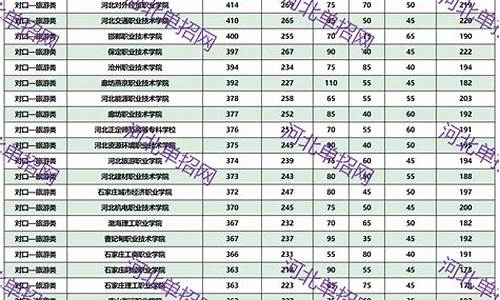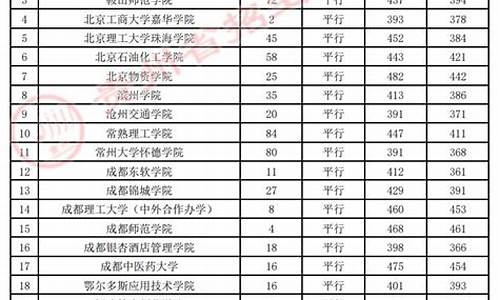您现在的位置是: 首页 > 教育研究 教育研究
高考英语非谓语-高考英语非谓语动词真题2022年
tamoadmin 2024-10-10 人已围观
简介1.两道高考英语题,关于非谓语从句2.应对高考英语:在语法填空里面有哪些填非谓语在填词是有规律的?例如get+sth done(P.P.) 这样的 越多越好3.高考单选题,如何判断非谓语作状语这个考点4.高考英语语法填空给出一个动词,作谓语要怎么填,非谓语呢?详细点5.高考英语必背知识点有哪些?6.高考英语语法:高中英语语法-非谓语动词1两道高考英语题,关于非谓语从句1.你可以翻译一下,是人被得淋
1.两道高考英语题,关于非谓语从句
2.应对高考英语:在语法填空里面有哪些填非谓语在填词是有规律的?例如get+sth done(P.P.) 这样的 越多越好
3.高考单选题,如何判断非谓语作状语这个考点
4.高考英语语法填空给出一个动词,作谓语要怎么填,非谓语呢?详细点
5.高考英语必背知识点有哪些?
6.高考英语语法:高中英语语法-非谓语动词1
两道高考英语题,关于非谓语从句

1.你可以翻译一下,是人被得淋巴瘤还是人得了淋巴瘤?由此可排除D。因为非谓语从句是以to
do
或doing或
(being)done
开头的
动词发生在主句之前,所以用having
done ,因此排除B
2.国定搭配be
concerned
about
.因此是Being
concerned
about
,being可省略。
应对高考英语:在语法填空里面有哪些填非谓语在填词是有规律的?例如get+sth done(P.P.) 这样的 越多越好
请参考非谓语动词考点。例如:
1. finish, enjoy, imagine, consider, suggest, escape, miss,avoid后一般要跟v-ing分词。
2. have sth done,get sth done,leave sth undone等
3. make oneself understood / heard / known /seen
但是,have sb do sth, have sb doing sth, have sth done等,具体要看用法和情景。
再如:be left doing, be left undone/ be made known, be caught doing sth
语法有很多规律,但是没有捷径,必须一点一点来。以上仅仅是非谓语动词的很小一部分。
高考单选题,如何判断非谓语作状语这个考点
高考英语中非谓语动词试题的实用技巧:用作结果状语时,可用现在分词或不定式,其原则区别是:一般要用现在分词,不定式用作结果状语主要用于某些特定旬式中 。 技巧一 用作目的状语.原则上要用不定式
1.When asked why he went there,he said he was sent there — — for a space flight.(2007江西卷)
A.training B.being trained C.to have trained D.to be trained
解析J答案选D。由于被训练进行航空飞行是他被派往那儿的目的,所以要用不定式,因此可排除A和B。另外.由于“他”与“训练”之间为被动关系,故选D。
2.— — this cake,you’11 need 2 eggs,175g sugar and 175g flour. (2006广东卷)
A.Having made B.Make C.To make D.Making
解析答案选C。由于是表示目的,故要用不定式,句意为:为了要做这块蛋糕,你需要2只鸡蛋、175克糖和175克面粉
技巧二 用于名词后作定语时,使用非谓语动词的原则是:用不定式,表示动作尚未发生;用现在分词,表示动作正在进行;用过去分词,表示动作已经发生,同时表示被动意义
1.The Chinese are proud of the 29th Olympic Games in Beijing in 2008.2006四川卷.
A.hold B.holding C.held D.to be held
解析答案选D。由于2008年奥运会尚未举行,故要用不定式
技巧三 用作伴随状语.原则上要用现在分词
1.As the light turned green,I stood for a moment,not— — , and asked myself what 1was going to do. (2007湖南卷)
A.moved B.moving C.to move D.being moved
解析答案选B。由于与句子主语I之间为主动关系,且表示当时持续了一会儿,故用现在分词。句意为:当信号灯变绿时,我站在那儿一会儿没动,心想自己该怎么办
2.Peter received a letter just nOW — — his grandma would come to see him soon
A.said B.says C.saying D.to say
解析答案选C。此处用现在分词表伴随,又如:A card came yesterday saying Tom willarrive tomorrow.昨天收到的明信片上说,汤姆明天到。Alan received a telegram saying hisfather was il1.埃伦收到一封电报.说是他父亲生病了
3.W henever he was asked why he was late for class, he would answer carelessly,always— — the same thing. (2006江苏卷)
A.saying B.said C.to say D.having said
解析答案选A。现在分词saying在此表示伴随。
4. We often provide our children with toys, footballs or basketballs, that allchildren like these things.
A.thinking B.think C.to think D.thought
解析答案选A。现在分词thinking在此表示伴随。
技巧四 用作结果状语时,可用现在分词或不定式,其原则区别是:一般要用现在分词,不定式用作结果状语主要用于某些特定旬式中
1.The glass doors have taken the place of the wooden ones at the entrance,— — inthe natural light during the day. (2007天津卷)
A.to let B.1etting C.1et D.having let
解析1答案选B。此处用现在分词表示结果。又如:It rained heavily,causing severe 19flooding in that place.大雨滂沱,造成了那个地方洪水泛滥。
2.Oil prices have risen by 32 percent since the start of the year,— — a record us$57.65 a barrel on April 4. 一 (2005山东卷
A.have reached B.reaching C.to reach D.to be reaching
解析答案选B。伴随着谓语动词的发生而产生的自然结果,用现在分词作结果状语。 注:在en0ugh to do sth.,too---to do sth.,0nly t0 do sth.等特定句式中,习惯上要用不定语式表示结果 如:
1.He hun’led to the booking office only— —that al1 the tickets had been sold out.(2006陕西卷)
A.to tell B.to be told C.telling D.told
解析答案选B。only to do sth.在此表示出人意料的结果。
2.He hurried to the station only that the train had left. 2005广东卷
A.to find B.finding C.found D.to have found
解析答案选A。only to do sth.在此表示出人意料的结果。
技巧五 凡是含有被动意义时.原则上要用过去分词。但是.如果所涉及的动作尚未发生,则用不定式的被动式:如果所涉及的动作正在进行.则用现在分词的被动式
1.The children talked SO loudly at dinner table that I had to struggle — —.(2007浙江卷)A.to be heard B.to have heard C.hearing D.being heard
解析答案选A。根据句意,此处指的是“被听见”,故要用被动式,因此可排除B和c。另. .外。由于“设法被听见”为目的状语,动作在当时尚未发生,故用不定式,即选A。
2.The repairs cost a lot,but it’ money well— —.A.to spend B.spent C.being spent D.spending
解析答案选B。由于money与spend之间为被动关系,故用过去分词。
3.Five people won the “China’S Green Figure” award,a title — — tofor their contributions to environmental protection.A.being given B.is given C.given D.was given
解析答案选C。由于title与give之间为被动关系,故用过去分词。
技巧六 谓语动词作状语时,其逻辑主语原则上应与主句主语保持一致(2005湖北卷)
1.Faced with a bill for$10,000,— —. (2006陕西卷)A.John has taken an extra iob B.the boss has given John an extra iobC.an extra iob has been taken D.an extra iob has been given to John
解析答案选A。由于(be)faced with的逻辑主语是John,故答案只能选A。
2.W hile watching television,— —. 2005全国卷III
A.the door bell rang B.the doorbell ringsC.we heard the doorbell ring D.we heard the doorbell rings
解析答案选c。因为watching的逻辑主语一定是we,排除选项A和B;又因在hear后作宾补的是省略了to的不定式,所以选项D中的rings是错误的。
技巧七 强调动作发生在主句谓语动作之前时,原则上要用完成式(根据情况可用不定式的完成式或现在分词的完成式)
1. — — from other continents for millions of years, Australia has many plants and animals not found in any other country in the world. (2005湖北卷
A.Being separated B.Having separated C.Having been separated D,To be separated
解析答案选C。因为Australia与separate之间是被动关系,且separate发生在谓语动词has之前,所以用现在分词的完成被动式作原因状语
2.The manager,— — it clear to us that he didn’t agree with US,left the meeting room.f2005江西卷
A.who has madeB.having made C.made D.making
解析答案选B。因为The manager与make之间是主动关系,且make发生在谓语left之前,所以用现在分词的完成式作状语,having made.相当于who had made. 的意思。
技巧八对于固定搭配.原则上按搭配习惯处理
l、— — with SO much trouble,we failed to complete the task on time. 2006四川卷)
A.Faced B.Face C.Facing D.To face
解析答案选A。(be)faced with为固定搭配,其意为“面对”,又如:TheY are all facedwith the same problem.他们都面临同样的问题
2、— — in a white uniforln,he looks more like a cook than a doctor. 2005湖南卷)
A.Dressed B.To dress C.Dressing D.Having dressed
解析答案选A。(be)dressed in为固定搭配,其意为“穿着..”,句中的Dressed in.表原因.相当于As he is dressed in. 的意思
高考英语语法填空给出一个动词,作谓语要怎么填,非谓语呢?详细点
考动词时,大体分为谓语动词和非谓语动词。
谓语动词要考虑时态和语态。考时态时看句子时态的标志性词,例如:so far与现在完成时连用,或者有时得根据句子的语意来判断。考语态时,考虑主动语态和被动语态。
非谓语动词要找到该动词的逻辑主语,看该动词与逻辑主语是主谓关系还是动宾关系来进行选择。有时填不定式表将来或目的。
动词还考词性转化,要熟悉相关的形容词,副词和名词
高考英语必背知识点有哪些?
一、谓语动词和非谓语动词
从是否能充当句子中的谓语来看,动词有谓语动词和非谓语动词两大类。
1、谓语动词
有人称和数的变化。如:He?is?a tractor driver.他是一个拖拉机手。
2、非谓语动词?
非谓语动词有动词不定式、动名词和分词三种,在句子里都不能单独作谓语,没有人称和数的变化。如:I am pleased?to meet you.我很高兴与你相识。(动词不定式)
二、实义动词、连系动词、情态动词和助动词
从其含义来分,动词有实义动词(notional verb),连系动词(link verb),情态动词(modal verb)和助动词(auxiliary verb)四类。
1、实义动词?
实义动词有完全的词义,并能独立作谓语动词。
如:The sun?shone?brightly this morning.
今天早晨阳光灿烂。
2、连系动词?
连系动词在句中作谓语动词,后面跟表语。英语连系动词有be(是),seem(似乎),look(看来),keep(保持),become(变成),get(变得),grow(变得),feel(感到),turn(变得,变成),appear(显得),remain(仍旧是)等。
如:It?is?never too late to mend.
改过不嫌晚。
3、情态动词?
情态动词有can (能),may (可以,也许),must(必须)等,表示能力、义务、必要、猜测等说话人的语气或情态。情态动词只能和主要动词一起构成谓语动词。
4、助动词?
助动词有shall,will,have,be,should,wonld, do等。它们只能和主要动词一起构成各种时态、语态、语气等动词形式,以及否定和疑问等结构中的谓语动词。
三、及物动词和不及物动词
从是否能直接跟宾语来分,实义动词又有及物动词和不及物动词两类。
1、及物动词?
后面必须跟宾语意义才完整的实义动词,叫做及物动词(transitive verb)。
如:I?believe?that the committee will?consider?our suggestion.
我相信委员会将会考虑我们的建议。
2、不及物动词?
本身意义完整后面不须跟宾语的实义动词,叫做不及物动词(intransitive verb)。
如:It?happened?in June 1932.
这件事发生于一九三;年六月。
3、兼作及物动词和不及物动词?
英语里有不少实义动词可以兼作及物动词和不及物动词。这样的动词又有两种不同的情况:
a) 兼作及物动词和不及物动词时,意义不变。试比较:
Shall I begin at once?我可以立刻开始吗?(begin作不及物动词)
She began working as a librarian after she left school.她毕业后当图书馆管理员。(began作及物动词)
b) 兼作及物动词和不及物动词时,有时意义不尽相同。
如:Wash your hands before meals.饭前要洗手。
四、情态动词
在行为动词、连系动词以外,还有两类动词,其中之一就是情态动词。从字面上看,我们就知道这是表示“感情与态度”的动词。
比如:I?can?do it without much difficulty. (能够,表示自信)
事实上,情态动词的英文说法modal verb,还是值得推敲的。modal,来自于名词mode,和modality(模式,方式)紧密相关,包括likelihood可能性, ability 能力, permission 许可与obligation责任这四种模式。
情态动词自身所具备的意义一般来说也是不完整的,不过和需要涉及其他事物的及物动词不同,情态动词不涉及其他事物,需要的是其他动词,即行为动词和连系动词,来配合使用。
一般来说情态动词是不能用作行为动词的,但也有例外,比如need,既可以用作情态动词,也可以是行为动词,看它的后面跟的是什么。
五、助动词
还有一类动词,也是意义上不完整、需要配合行为动词、连系动词使用的,那就是助动词。顾名思义,助动词就是用来帮助主要动词构成谓语的。
主要包括进行时态的be(is / am / are / was / were)、一般时态的do / does / did,将来时态的will / shall / would / should和完成时态的have / has / had。这种动词的英文名称叫auxiliary verb,简写是v. aux.。
高考英语语法:高中英语语法-非谓语动词1
《高中英语语法-非谓语动词1》由出国留学我精心为您学习英语准备.liuxue86.com。本内容整理时间为05月12日,如有任何问题请联系我们。
非谓语动词1
动词不定式、分词(现在分词,过去分词)和动名词统称为非谓语动词。现代英语将现在分词和动名词合为一大类叫作v + ing形式。这些动词的形式不能在句中单独作谓语用,因而没有语法主语。但可以有逻辑主语。由于没有语法主语,也就不受人称和数的限定,因为不是谓语,也就没有时态和语态,但这些词仍能表示动作和状态,所以仍有表示与其他动词相对时间关系的形式。由于与其它词有逻辑上的主谓关系,因此也有表示主、被动的形式,同时也有自己的宾语和状语,一起构成非谓语动词的短语(动词不定式短语,分词短语,动名词短语)。非谓语动词在英语语法中占有特殊且重要的位置。非谓语动词形式多样,应用广泛,且在句中起着很活跃的作用,也是语法项目中的重点和难点,学好非谓语动词,才能正确进行口语和书面的交流。
动词不定式、过去分词及v-ing形式在句中均不能作谓语用,所以叫做非谓语动词。
(一)动词不定式:
动词不定式由"to+ 动词原形"构成,如:to study, to play,动词不定式虽然不能作谓语动词用,但仍留着动词的特征,它可以带有所需要的宾语或状语而构成动词不定式短语,如:to study hard, to play table tennis。
1、动词不定式的形式变化:动词不定式有下列时态和语态的形式变化。
语态式 一般式 完成式 进行式 完成进行式
主 动 to build to have built to be building to have been building
被 动 to be build to have been build
2、动词不定式的基本用法:动词不定式能起名词、形容词和副词的作用,可在句中作主语、表语、宾语补足语、定语和状语用,如:
(1)作主语:To help each other is good.(动词不定式作主语时,一般可用it作形式主语,而将作主语的动词不定式置于句末,如:It is good to help each other.
(2)作表语:My job is to drive them to the power station every day. 动词不定式在系动词be之后作表语,与表示将来时的be + 动词不定式结构有所区别,如:Our plan is to set up another middle school for the peasants' children.我们的计划是给农民子弟再成立一所中学。(句中的谓语动词为is,动词不定式to set up? 为表语,主语为plan,但plan并不是动词不定式的逻辑主语,即动词不定式 to set up所表示的动作不是主语plan产生的。)We are to set up another middle school for the peasants' children.我们将为农民的子弟再成立一所中学。(句中的are to set up整个结构为句中谓语,主语为we,同时也是动词不定式to set up所表示的动作的逻辑主语,即动词不定式to set up所表示的动作是由we产生的)。
(3)作宾语:①作及物动词的宾语,如:She wishes to be a musician.;②作某些形容词的宾语:可以有动词不定式为宾语的形容词一般有glad, sorry, afraid, pleased, determined, willing, eager, anxious, ready, sure等,如:I am determined to give up smoking.;③动词不定式一般不作介词的宾语,但动词不定式之前如有疑问词时,就可作介词的宾语,如:Can you give us some advice on what to do next?
(4)作宾语补足语,如:Tell the children not to play on the street. 如果句中的谓语动词为see, hear, watch, notice, have, make, let等,作宾语补足语的动词不定式须将to省去,如:I saw a little girl run across the street.
(5)动词不定式在句中作宾语,如带有宾语补足语时,须先用it作形式宾语,而将该动词不定式后置,如:I don't think it right to do it that way.
(6)作定语:动词不定式作定语时,须位于被其修饰的名词或代词之后,如:Is this the best way to help him? 和定语用的动词不定式如果是不及物动词,不定式后面就要用必要的介词,如:He is the man to depend on. 如果被不定式修饰的名词为place, time, way,不定式后面的介词,习惯上可以省去,如:The old man is looking for a quiet place to live.
(7)作状语:动词不定式可以作下列的状语:①目的状语: Every morning he gets up very early to read English. 为了强调不定式表示目的的作用,可在不定式前加in order to或so as to(以便或为了),但应注意in order to位于句首或句中均可,而so as to不能位于句首,如:She reads China Daily every day in order to (so as to) improve her English. 将表示目的的不定式置于句首,也可强调目的的作用,如:To master a foreign language, one must work hard at it. ②结果状语:They lived to see the liberation of their home town.他们活到亲眼见到了他们家乡的解放。③too + 形容词或副词 + 动词不定式,表示"足能?"的结果,如:You are old enough to take care of yourself now.
3、复合结构不定式:由for + 名词(或代词宾格)+ 动词不定式即构成复合结构的动词不定式。其中for本身无意义。for后面的名词或代词是不定式的逻辑主语,这种不定式在句中可作主语、表语、宾语、定语或状语,如:It is very important for us to get everything ready for the harvest. 当作表语用的形容词表示不定式的逻辑主语的性质或特征时,就用介词of而不用for引出不定式的逻辑主语,这些形容词一般有good, nice, kind, wise, silly, stupid, foolish, right, wrong, careless, impolite等,如:It is very kind of you to help him every day.
4、疑问词 + 动词不定式:疑问代词和疑问副词后可加动词不定式构成不定式短语,在句中可作主语、表语或宾语,如:How to prevent them from swimming in this river is a problem.
5、动词不定式的否定式:动词不定式的否定式是由not + 动词不定式构成,如:It's wrong of you not to attend the meeting.
6、动词不定式的时态形式所表示的时间关系:(1)一般式:动词不定式一般式所表示的动作是和谓语动词所表示的动作同时发生,但在多数情况下,是在谓语动词所表示的动作之后发生,如:We decided to plant more trees this spring.(其后),They often watch us play table tennis.(同时);(2)完成式:动词不定式完成式所表示的动作发生在谓语动词所表示的动作之前,如:I am sorryto have kept you waiting.(3)进行式:动词不定式进行式所表示的动作正在进行中,而且与谓语动词所表示的动作同时发生,如:She happened to be writing a letter in the room when I came in.
7、动词不定式的被动语态用法:如果动词不定式的逻辑主语为这个不定式所表示的动作的承受者时,不定式一般就用被动语态形式,如:What is to be done next hasn't been decided yet.
练习、非谓语动词(一)
1. ---- Can you ride a horse? ---- No, I never had the chance ____.
A. for learning it B. for learning how C. how to learn it D. to learn how
2. Paul said, "Give me a chair _____."
A. to sit B. sit C. sit on D. to sit on
3. I ran too fast ______ where I was going.
A. to notice B. for me to notice C. to notice for me D. and notice
4. ---- Have you enjoyed your visit here? ---- Yes, I'll be very sorry______ .
A. for leaving B.of leaving C. to leave D. with leaving
5. ---- I'll help you whenever you need me. ---- Good. I'd like _____me tomorrow.
A. you helping B. that you will help C. you to help D. that you help
6. ---- I didn't hear you come in last night. ---- That's good. We tried_____ noisy.
A. not be B. not to be C. to be not D. to not be
7. Because of air pollution being greatly reduced, this city is still ______.
A. a good place which to be lived in B. lived as a good place
C. a good place to live in D. living in as a good place
8. ---- Why was the official meeting called? ---- ______ new officers.
A. Select B. Selecting C. To select D. For selecting
9. ---- Where did he go? ---- He went to another store ______.
A. to buy pencils B. for buying pencils C. buy pencils D. buying pencils
10. ---- My baby has a heart trouble. ---- Did the doctor find it difficult ______ ?
A. in treating B. treating C. for treating D. to treat
1~5 DDACC 6~10 BCCAD 《高中英语语法-非谓语动词1》由出国留学我精心为您学习英语准备.liuxue86.com









